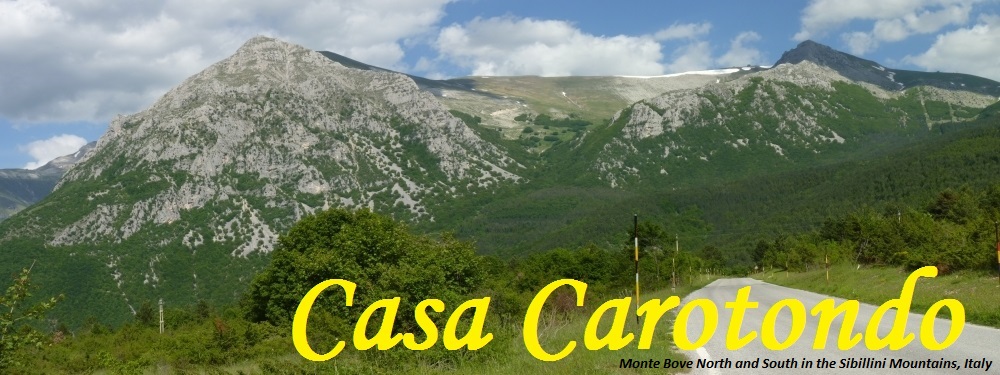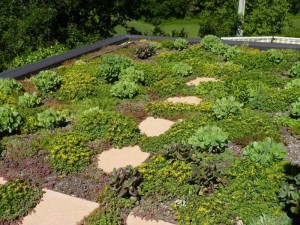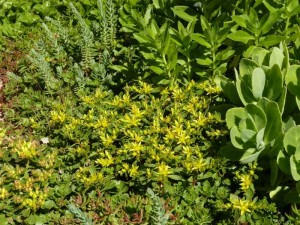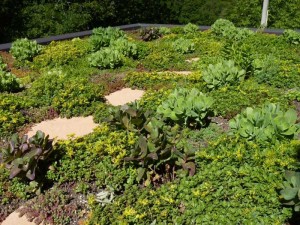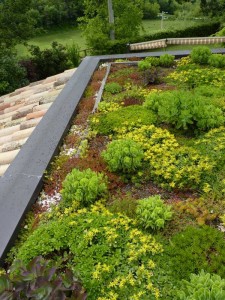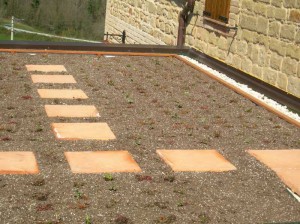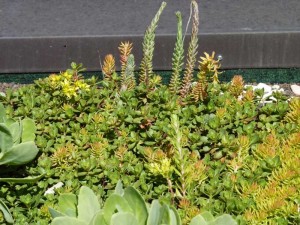Green roofs have been around for some time, but are now increasingly being regarded as a way to improve the environment in cities. The city of Chicago, for instance, has now declared that it sees green roofs as the way forward to try to reduce rising temperatures in the city as well as enhancing air quality. Heat is stored in the roof and walls of buildings during the day and given off at night, the so-called Urban Heat Island (UHI) effect. A green roof prevents this heat storage happening. Through the daily dew and evaporation cycle, plants on vertical and horizontal surfaces are able to cool cities during hot summer months. They also provide some insulation to the building below, even in winter.
Green roofs can also help reduce the distribution of dust and particulate matter throughout the city, as well as the production of smog. This can play a role in reducing greenhouse gas emissions.
Another benefit of green roofs is that they soak up rainwater reducing the impact of storm water on the sewage system. Cities, in particular, have many impervious surfaces so that the run-off from heavy rain can cause flooding, erosion and even cause sewage to be washed into rivers. It has been demonstrated that green roofs retain up to 60% of storm water either soaking it up completely or releasing it slowly.
Green roofs tend to be on flat roofs, although I have seen some images of vegetation on gently sloping roofs. These roofs are generally covered in some sort of waterproofing membrane, which slowly degrades in sunlight and eventually leaks. By covering the waterproofing membrane with some kind of garden the membrane is protected and has a longer life span.
A green roof can be a simple sedum carpet, a complete garden such as that on the Chicago town hall with 100 different plant species or even a vegetable patch. This is the difference between extensive and intensive green roofs. The extensive type is typically low-maintenance and has a shallow substrate of less than 10cm. The intensive green roof has a deeper substrate and a wider range of plants including even trees requiring greater maintenance. The important thing is that the roof is strong enough to support the extra weight of the substrate the plants sit in and the additional water that is soaked up by it.
At Casa Carotondo we became interested in the idea while we were experiencing problems with the flat roof of our holiday apartment Priora. The waterproof membrane we had applied to the concrete was just not working although we had followed the instructions on the packet religiously. We experience some of our heaviest rain here in Le Marche during summer storms when we would expect the apartment to be occupied, so we could not leave the roof as it was. After much research about the alternatives we decided on the sedum carpet, or extensive, option. Sedums are hardy and able to withstand our cold winters and hot summers. They do not need lots of water (the roof faces south-west) or maintenance and can live in difficult conditions.
Reluctantly we stripped all the carefully laid tiles and other paraphernalia off the roof back to the bare concrete. The idea was to cover the roof in one single piece of EPDM (synthetic rubber), the stuff you use to line fish ponds. The theory being that one single piece with no seams cannot leak. To protect the EPDM from eventual sharp edges in the concrete we laid some thick fleece first and put the EPDM over this. The edges of the EPDM were stuck to the wall. A metal strip was then placed over the EPDM edge to ensure the wind did not blow it up and the rain could then get in underneath.
The EPDM was then covered in fleece again. This fleece had corrugations so that excessive water would not flood the substrate but could flow through the corrugations and into the drainage system. Around the perimeter of the roof a 20cm wide strip was divided off. In this we put gravel for the water to drain off into a rainwater storage tank. We still wanted to use at least part of the roof as a terrace for sitting so we put down some wooden decking tiles that Rob had made. The remaining part of the roof was then covered in substrate and planted with sedum plugs.
Substrate is the material you grow the sedums in. Deciding what to use for the substrate was a result of some investigation on the internet. As green roofs are becoming more popular a lot of research is being done on them at universities including studies on the best mixture to use as a substrate. In the end I decided on 70% vermiculite, 15% coarse sand and 15% compost. The compost was just normal potting compost you buy in the nursery. I decided on this as it was sterile and would, at least to begin with, give us few problems with weeds. Using a lot of vermiculite had the advantage of being light and not causing an undue weight problem to the concrete roof. The sedums seem to be happy in this mix with an annual dosage of fertilizer. We put some stepping stones among the plants, so we can maintain them without treading on them. The vermiculite, fleece and the plants themselves do store quite a bit of water. The ˜carpeting” of the plants also prevents the substrate from drying out. Most months they manage without any additional watering but in high summer, usually July and August, we do need to water them.
The roof of holiday apartment Priora, although not on the same scale as the Chicago City Hall is a pleasant spectacle particularly on a dull summers day, it is low maintenance and most importantly it has resolved our problem of leaks. It has also provided a biosphere for small plant life, the lizards particularly seem to enjoy running around it. The sedums, themselves, are robust plants and recover quickly when our 30kg dog sits on them.
